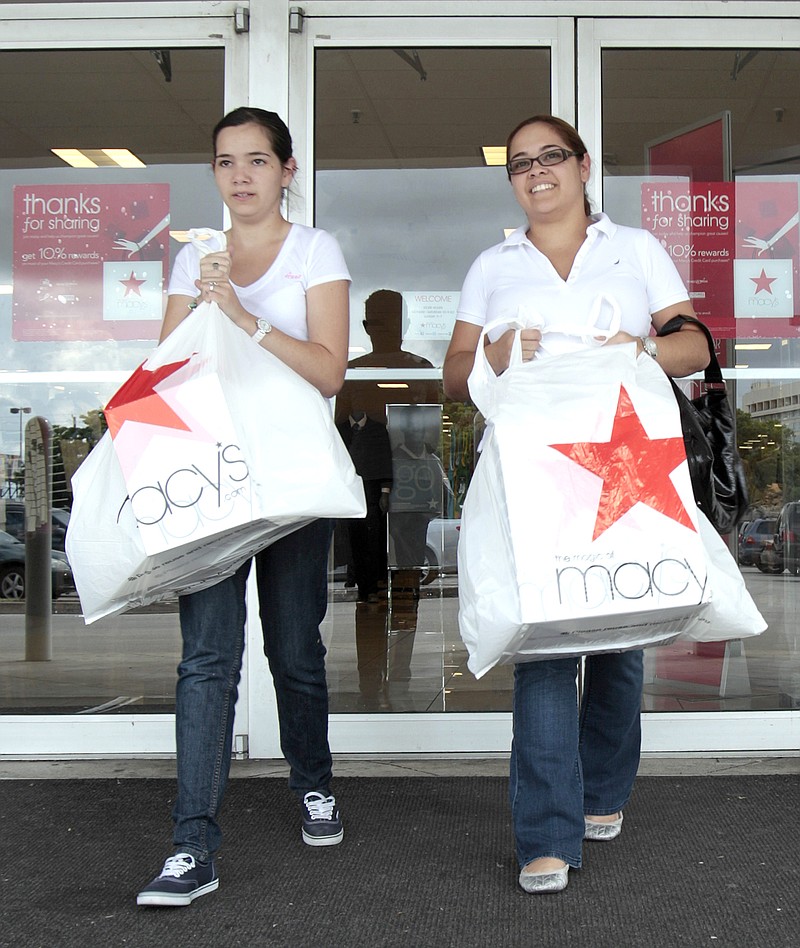By Timothy R. Homan
Bloomberg News
WASHINGTON - The value of goods and services produced in the United States has surpassed its pre-recession level after 15 quarters, taking three times longer than the average for 10 previous recoveries since World War II.
Gross domestic product expanded at a 2.5 percent annual rate in the period from July through September, the Commerce Department reported Thursday, the fastest pace in a year and up from 1.3 percent in the prior three-month period. After adjusting for inflation, GDP climbed to $13.35 trillion last quarter, topping the $13.33 trillion peak reached in the last three months of 2007.
"The American economy finally has accomplished the recovery and has now entered the expansion," said Neal Soss, chief economist with Credit Suisse in New York, who was an aide to former Federal Reserve Chairman Paul Volcker. "But the growth is clearly too slow to solve the most significant problems the economy faces: jobs and getting the public budgets under control."
Consumers reduced savings to boost purchases and companies stepped up investment in equipment and software, even as the biggest drop in incomes in two years raises concerns about whether the spending increase will continue. The number of Americans with jobs last month, 131.3 million, was lower than the 138 million workers in December 2007, when the 18-month recession began, according to Labor Department data.
The U.S. economy expanded at an average 0.9 percent rate in the first half of 2011, the worst performance since the recovery began in June 2009. Growth needs to exceed 2.5 percent to reduce the jobless rate, according to estimates by Kurt Karl, chief U.S. economist at Swiss RE in New York.
Unemployment stuck around 9 percent or higher for 30 months explains why Federal Reserve policy makers, who meet next week, and the Obama administration are considering additional measures to boost the economy.
"We are well below potential output," said Ben Herzon, an economist at Macroeconomic Advisers LLC, the St. Louis-based forecasting firm cofounded by former Fed Governor Laurence Meyer. "The time to get excited is when everyone who is looking for work has got work."
Corporate investment in equipment and software was a bright spot in Thursday's report, climbing at a 17.4 percent pace, the most in a year.
Profits for companies in S&P 500 rose 16 percent on average in the three months ended Sept. 30, based on results reported so far. Earnings are beating analyst predictions by 5.5 percent, compared with a rate of 3.3 percent since 2005, the data show.
But the pickup in investment hasn't translated into more jobs. Payrolls rose by an average 96,000 workers per month last quarter, down from the 166,000 average in the first quarter.
Household purchases, the biggest part of the economy, increased at a 2.4 percent pace, more than forecast by economists.
"Because the strength was led by consumers, the economy's outlook is much better than we had previously thought," said Chris Rupkey, chief financial economist at Bank of Tokyo- Mitsubishi UFJ in New York.
The savings rate last quarter dropped to 4.1 percent, the lowest since the last three months of 2007. After-tax incomes adjusted for inflation decreased at a 1.7 percent annual rate, the biggest drop since the third quarter of 2009.
McDonald's, the world's biggest restaurant chain, is among companies trying to keep prices down to attract budget- conscious customers. The Oak Brook, Ill.-based company this month said third-quarter profit gained 8.6 percent.
"The environment out there is still fragile," James Skinner, McDonald's vice-chairman and chief executive officer, said in an Oct. 21 call with analysts. "Consumers everywhere continue to be cautious and hesitant to spend."
--With assistance from Craig Torres in Washington.
